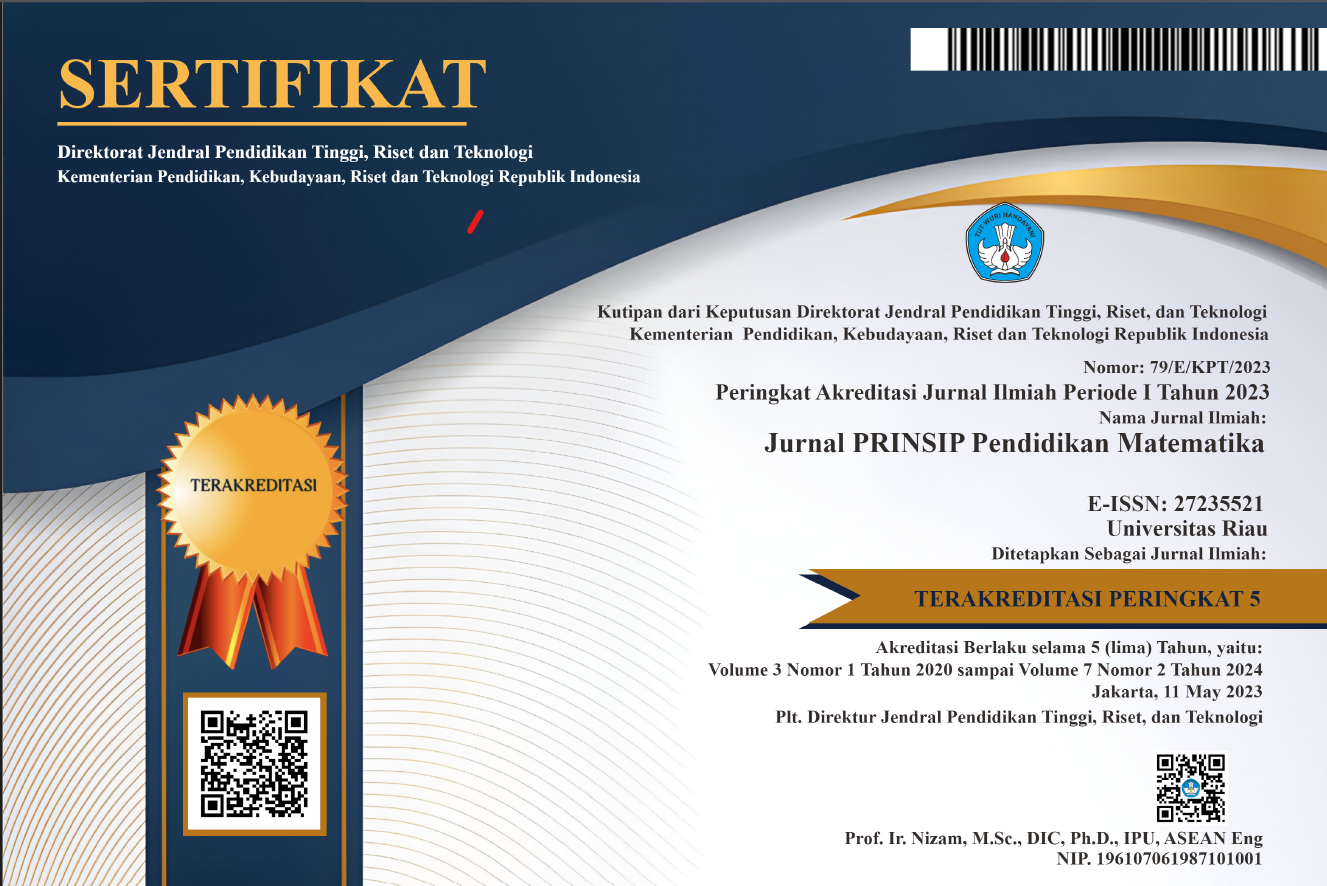THE ROLE OF E-LEARNING IN OPTIMIZING STUDENT’S MATHEMATICS LITERATION
Abstract
Changing the old pattern to a new pattern is one form of position in optimizing learning activies. Changes in this pattern, namely from teacher-centered patterns to new studen-centered patterns through the network era have a broad impact. The development of internet technology has a very big influence on learning. E-learning media makes it easier to complete activities or activities through accesing information and subject matter whenever and whereever. The method used in this study, namely using library searches and journal reviews. The use E-learning is very important in providing students to compete in this globalization era. Through E-learning media, students and meaningful learning atmosphere. Mathematical letacy skills are related to students reasoning and communication in solving a problem
Downloads
References
Agung, A.P. (2017). Peningkatan kemampuan literasi matematis siswa SMA melalui penerapan model e-learning berbasis software android. INTεRMATHZO: Jurnal Pendidikan dan Pembelajaran Matematika, 2(2), 5 – 6
Buyung, & Dwijayanto. (2017). Analisis kemampuan literasi matematis melalui pembelajaran Inquiry dengan strategi Scaffolding. Unnes Journal of Mathematics Education Research, 6(1), 112 – 119
Damayanti, N.K.A., Suarsana, I.M., Suryawan, I.P.P. (2017). Peningkatan kemampuan literasi matematis siswa melalui penerapan Collaborative Learning Models. Jurnal Matematika Sain dan Pembelajarannya. 11(1), 33 – 42
Draper, R.J. (2002). School mathematics reform, constructivism, and literacy: A case for literacy instruction in the reform-oriented math classroom. Journal of Adolescent & Adult Literacy, 46(6), 520 – 529
Fitriani, & Nurjannah. (2019). Peran e-learning dalam pembelajaran matematika di Sekolah Menengah Pertama. Journal and Pedagogical Mathematics, 1(2), 102 – 110
Hutagaol, A.S.R., & Sopia, N. (2020). Kemampuan literasi matematika mahasiswa dalam model Problem Based Learning melalui daring. VOX EDUKASI: Jurnal Ilmiah Ilmu Pendidikan, 11(2), 86 – 96
National Council of Teachers of Mathematics (NCTM). (2000). Principles and standards for school mathematics. National Council of Teacher of Mathematics
Ojose. (2011). Mathematics literacy: Are we able to put the mathematics we learn into everyday use?. Journal of Mathematics Education, 4(1), 89 – 100
PISA. (2015). Draft mathematics framework. http://www.oecd.org/pisa/pisaproducts/pisa2015draftframeworks.htm. [Diakses pada 1 November 2020]
Rosenberg, M.J. (2001). E-learning: Strategies for delivering knowledge in the digital age. McGraw-Hill Companies
Sriyatun, S., Masrukan, & Wardono. (2018). Analisis literasi matematika pada pembelajaran kuantum metode Mind Mapping berbantuan Schoology berdasarkan minat. Prisma (Prosiding Seminar Nasional Matematika), 145 – 154
Stacey, K. (2010). Mathematical and journal of Science and Mathematics I. Scientific literacy around the world education in Southeast Asia, 33(1), 1 – 16
Sugiman. (2009). Pandangan matematika sebagai aktivitas insani beserta dampak pembelajarannya. Seminar Nasional Matematika dan Pendidikan Matematika di Jurusan Pendidikan Matematika FMIPA UNY 5 Desember 2009, 414 – 427
Walle, J.A.V.D. (2012). Elementary and middle school mathematics. Terjemah oleh Suyono: Matematika sekolah dasar dan menengah; pengembangan pengajaran. Erlangga.
Wardhani, S. & Rumiati. 2011. Modul matematika SMP program bermutu instrumen penilaian hasil belajar matematika SMP: Belajar dari PISA dan TIMSS. Kemendiknas dan PPPPTK
Copyright (c) 2020 Jurnal Prinsip Pendidikan Matematika

This work is licensed under a Creative Commons Attribution-NonCommercial-ShareAlike 4.0 International License.





